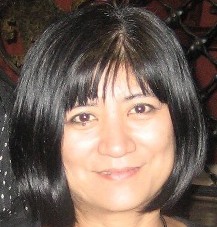Making Personal connections with Global Issues
 The Japan Forum > Click Nippon > Creative Lesson Planning
The Japan Forum > Click Nippon > Creative Lesson Planning
Making Personal connections with Global Issues
Yoko Nishimura-Parke
(National Asian Languages Studies in Schools Program - Languages Support Officer,Secondary Education, Learning and Leadership Directorate, NSW Department of Education and Communities)
In the previous year, my Heritage Class discussed the definition of 'a global citizen', what a 'global citizen' does, what kind of person a 'global citizen' is, who a respected 'global citizen' is and so on. Now, a year later, I wanted to really dig deeper to discover the meaning of studying this topic.
Why study about being a 'global citizen?' It is in order to prepare students to flourish as 'global citizens' themselves in the future by expanding the international viewpoints each student already possesses. This was a constant, clear target in my mind and it was not constricted to just this unit.
So how does one prepare? First of all, I thought it should start by knowing about global issues. Being aware of what kind of problems are happening now on Earth, why and who is causing them, who the victims are and so on, was the first step. I started the unit with an activity that made students take the initiative by asking them to research an issue that they were most interested in and then give a presentation; instead of providing problems I (the teacher) chose as material. The students learned about the following issues through each other's presentations: for example, population issues, sicknesses, waste issues (littering, wreckage), global warming, deforestation, water issues and poverty.
In order to understand global issues, I thought understanding human rights was imperative; hence we read the Declaration of the Rights of Man in both Japanese and English. Then using a photobook called Where Children Sleep as a specific example, we discussed whether human rights were protected or not. This photobook was a collection of portraits of children around the world with their profiles and sleeping places, and it challenged my students to rethink their conception about having a safe room or a place called a bedroom.
Although we had thought about the human rights of children around the world, what about the human rights of the children in Fukushima? So next, I got the students to listen to narrations of newspaper articles about children in Fukushima and the state of Fukushima. When my students heard a primary school child say the words "I'm going to die from radiation anyway, so I'm not going to study", they were extremely shocked.
Following that, in order to grasp the connection between Australia and Fukushima, the students read various materials such as a letter to the Secretary General of the UN written by Yvonne Margarula (Mirrar Senior Traditional Owner and representative) and an extract from "Series: Thinking about Nuclear Issues" in the Nichigo Press. The students discovered that the uranium which had been used in Fukushima had actually been forcefully dug up from the former inhabitants' property, ruining the land of the Mirrar people in the Northern Territory. They also recognized the connection between the Fukushima problem and the problem of radiation exposure the former inhabitants were suffering. Furthermore, they were shocked to learn that the people from Fukushima, who were the victims, were suffering various discrimination due to their exposure to radiation.
 |
Yoko Nishimura-Parke |
|---|---|
| (National Asian Languages Studies in Schools Program - Languages Support Officer,Secondary Education, Learning and Leadership Directorate, NSW Department of Education and Communities) | |
Immigrated to Australia in 1990 as a high school Japanese teacher. Employed in the NSW Department of Education and Training since 1998. Currently promoting projects involving Asian languages as an expert in developing educational materials for Japanese as a foreign language. Co-authored Japanese textbook series Mirai and iiTomo (Pearson Education). Became involved in education for Japanese as a Heritage Language in recent years and is deeply engaged in developing educational materials in this field. |
Making Personal connections with Global Issues
Yoko Nishimura-Parke
A Project for Community Involvement
Inahara Kyoko